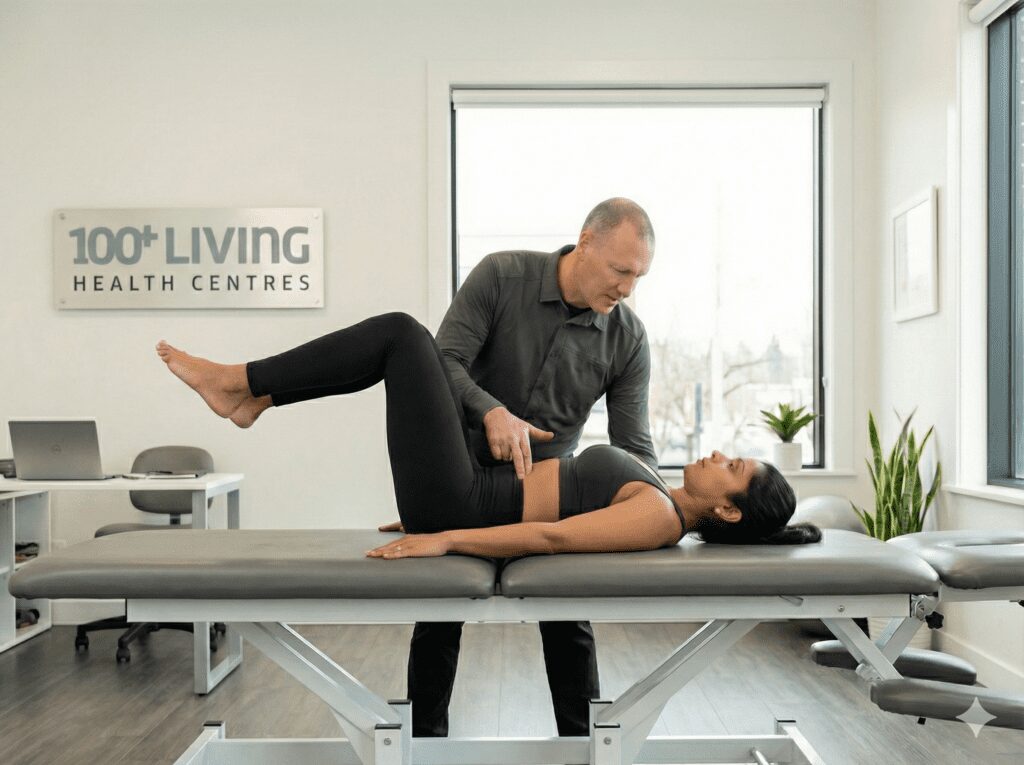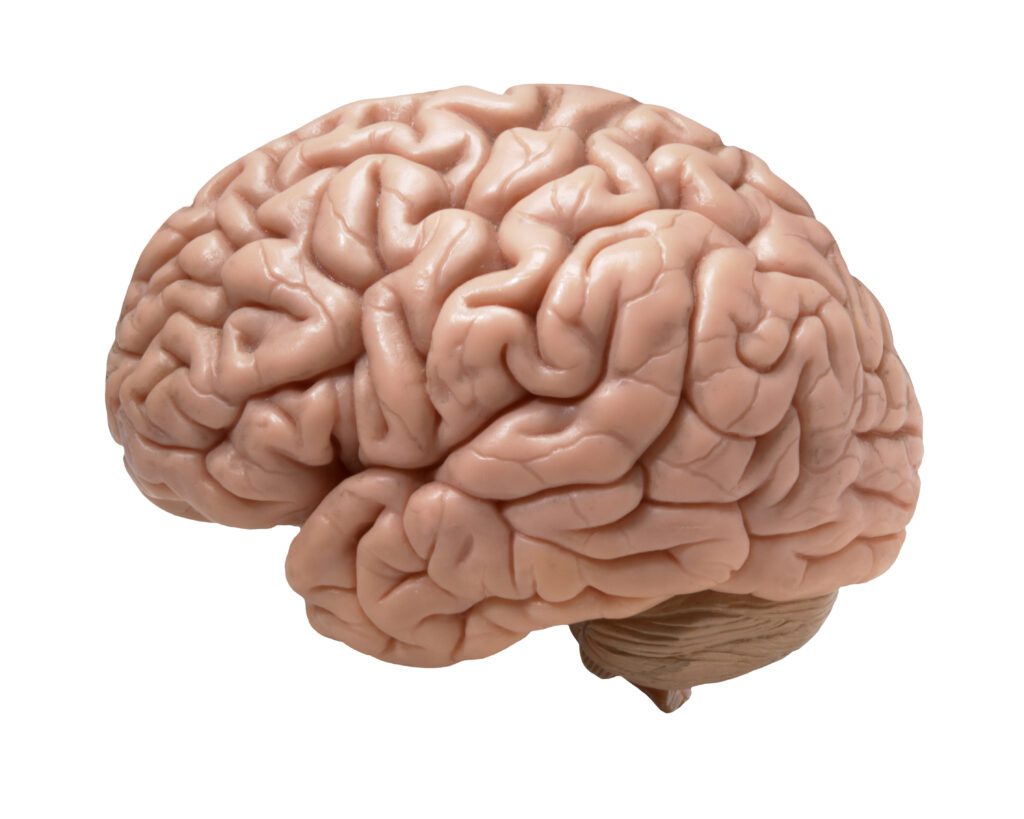Have you ever looked at yourself in a window reflection and thought:
- Why is my head so far forward?
- When did my shoulders start rounding in?
- Why do I feel stiff and drained by mid-afternoon, even though I’m “healthy”?
If you’re like most North Americans, you probably chalk it up to stress, age, or just life.
But what if I told you that these subtle postural shifts might be silently sabotaging your brain function, nervous system health, and long-term performance—even before you feel pain?
A groundbreaking new study published in Scientific Reports (DOI: 10.1038/s41598-025-06603-8) has added yet another critical piece of evidence to this puzzle: posture is not merely structural—it’s neurological.
And waiting for pain before taking action? That’s like waiting until your engine seizes before checking the oil. By the time pain hits, damage is already brewing under the surface.
In this blog post, I’ll show you:
- What the latest research says about posture and the brain
- Why ignoring your posture—even if you’re pain-free—is a dangerous gamble
- How spinal dysfunction creates neurological stress and systemic inflammation
- The science behind Chiropractic BioPhysics® (CBP®) and why certified CBP doctors are uniquely trained to fix posture at the root
- How at the 100+ Living Health Centres, we help people—from athletes to busy parents—optimize posture, restore health, and live a vibrant life they love
Let’s dive in.
The New Study: Proof That Posture Shapes Your Brain
The new paper by Sandal et al. (2025), published in Scientific Reports, explored how subtle changes in spinal position influence brain activity patterns, even in the absence of pain. Using functional MRI and advanced neuroimaging techniques, they showed:
Altered spinal alignment leads to measurable changes in cortical activation in regions linked to motor control, proprioception, and autonomic regulation.
In simpler terms:
- Your spinal alignment changes how your brain perceives and coordinates your body.
- This happens even if you feel no pain at all.
- Over time, poor posture can lock your brain into dysfunctional “maps” that impair balance, movement, and organ function.
This research echoes a core concept taught in Chiropractic BioPhysics® (CBP®) and advanced neurology circles for decades: your posture is your window into brain function.
Why “No Pain = No Problem” is a Dangerous Myth
Here’s the trap many people fall into:
- They wait for pain to appear before seeking help.
- They assume that because they’re “pain-free,” everything is fine.
But let’s break that myth.
1. Pain Is a LATE Sign of Damage
According to Heidi Haavik, PhD, a renowned chiropractic neuroscientist from New Zealand, spinal dysfunction (subluxation) can exist for months or years before pain signals appear. In her book The Reality Check, she writes:
“Abnormal spinal movement alters proprioceptive input to the brain, creating sensory-motor conflicts that eventually may manifest as pain—but dysfunction exists well before symptoms.”
Translation: Your brain has been struggling long before your back or neck cries out.
Haavik’s numerous studies using EEG and fMRI demonstrate that improper spinal movement changes the way your brain integrates sensory information. This may:
- Reduce balance and coordination
- Increase stress hormones like cortisol
- Impair immune system regulation
- Lead to fatigue, brain fog, and reduced performance
This aligns perfectly with Sandal’s findings—postural strain changes brain activity, silently sowing the seeds of chronic dysfunction.
2. Nerve Inflammation Starts Quietly
By the time pain appears, the nerve itself is often inflamed.
A 2005 study by Coppieters and Butler showed that even mild mechanical stress on a nerve (from poor posture or restricted joint motion) can:
- Decrease blood flow to the nerve
- Cause chemical inflammation
- Reduce nerve conduction speed
- Eventually result in pain, weakness, or numbness
It’s why CBP chiropractors emphasize correcting posture and biomechanics proactively—to prevent nerve irritation before it evolves into pain syndromes.
The Neurological Consequences of Poor Posture
Let’s connect the dots. Here’s why posture is about more than “standing up straight.”
Your spinal joints are packed with proprioceptors—tiny sensors that constantly inform your brain where your body is in space. This feedback:
- Regulates your posture and muscle tone
- Influences autonomic nervous system activity (heart rate, digestion, hormones)
- Maintains balance, spatial awareness, and coordination
When posture deteriorates—think forward head posture, thoracic kyphosis, lumbar flattening—these sensors fire incorrect signals to your brain.
As Heidi Haavik’s work shows, this creates:
- Poor motor control and muscle timing
- Increased sympathetic nervous system activity (“fight-or-flight” mode)
- Suppressed immune response
- Heightened stress perception
This explains why people with poor posture often report:
- Fatigue, even without hard physical labor
- Tight muscles that “never relax”
- Difficulty focusing or thinking clearly
- Increased stress and anxiety
Forward Head Posture: The “Digital Age Disease”
One of the most significant postural distortions today is Forward Head Posture (FHP). Studies estimate that 66% of the Western population has some degree of FHP, driven by:
- Phones and laptops
- Long hours at desks
- Sedentary lifestyles
Chiropractic BioPhysics® research, including studies by Harrison et al., shows that for every inch the head shifts forward:
- The spine endures an additional 10-12 pounds of leverage
- Spinal discs and ligaments undergo accelerated degeneration
- The spinal cord and nerve roots experience increased tension
Even a mild forward head posture can reduce lung capacity by up to 30%, according to research in the Journal of Physical Therapy Science (2014).
And as Sandal’s study now confirms—these changes also alter brain activity.
Posture and Performance: Athletes Know the Secret
Elite athletes have known for years what the public is only starting to realize:
Optimal posture equals optimal performance.
A study in the Journal of Manipulative and Physiological Therapeutics (JMPT) demonstrated that spinal adjustments can improve reaction time in athletes by as much as 15%—a difference that separates champions from the competition.
Heidi Haavik’s research further shows that spinal adjustments:
- Increase cortical drive to muscles
- Improve joint position sense
- Reduce fatigue during high-load tasks
So whether you’re:
- A triathlete chasing a new personal best
- A corporate professional giving critical presentations
- A parent lifting kids and groceries
Your posture affects how efficiently your brain and body work together.
The Chiropractic BioPhysics® Advantage
Chiropractic BioPhysics® (CBP®) is not “traditional chiropractic.” It’s an evidence-based protocol that:
- Measures your posture and spinal curves precisely using digital x-rays
- Analyzes structural misalignments in three dimensions
- Designs individualized plans combining:
- Mirror-image adjustments
- Posture-specific exercises
- In-office traction setups
CBP research, led by Dr. Don Harrison and colleagues, has produced hundreds of peer-reviewed studies demonstrating:
- Restoration of normal spinal curves reduces pain and disability
- Improved spinal alignment reduces neural tension
- Corrected posture improves long-term health outcomes
A 2020 study in European Spine Journal confirmed that patients who completed CBP structural rehabilitation had significantly lower recurrence rates of back pain than those who received standard care.
Why You Need Testing—Even Without Pain
At the 100+ Living Health Centres, we passionately believe:
You deserve to thrive, not merely survive.
That’s why we perform advanced structural and neurological testing to find your primary problem. Here’s how it works:
- Digital posture assessments
- Three-dimensional x-rays
- Digital spinal measurements
- Neurological tests assessing balance, proprioception, and muscle function
These tests reveal the “silent” problems behind:
- Chronic fatigue
- Recurring headaches
- Athletic plateaus
- Stress and anxiety
- Poor sleep
Even if you feel fine, your spine and nervous system might be fighting silent battles that are slowing you down.
At 100+ Living Health Centres: Your Partner in Longevity
Our team at the 100+ Living Health Centres is Advanced Certified in CBP® and deeply committed to:
- Identifying the true root cause of your issues
- Designing precise correction plans tailored to your unique structure
- Helping you restore posture, performance, and vitality—no matter your age or goals
We help:
- Young athletes achieve peak performance
- Busy professionals protect their health from modern stress
- Retirees regain mobility, confidence, and joy
And we do it every single day.
Because we know that your posture is the foundation of your health—and your future.
Your Call to Action: Don’t Wait for Pain
If you take one thing from this article, let it be this:
Don’t wait for pain.
By the time symptoms appear:
- Your nervous system is inflamed
- Your posture has adapted into harmful patterns
- Your body has begun breaking down
The best time to check your posture and spinal health was yesterday. The next best time is today.
Schedule an assessment at a Certified Chiropractic BioPhysics® office. If you’re near us, come see the team at the 100+ Living Health Centres. We’ll help you:
- Measure where your posture stands today
- Identify neurological dysfunction before it becomes pain
- Design a plan to restore your body—and your life—to its full potential
Because you deserve to live 100+ years, performing at your best, and loving every moment.
References:
- Sandal et al. (2025). Altered brain activation following changes in spinal posture. Scientific Reports. DOI: 10.1038/s41598-025-06603-8
- Haavik, H. (2014). The Reality Check: A quest to understand chiropractic from the inside out. Haavik Research
- Harrison, D. E., et al. (2005-2020). Various CBP publications in JMPT, Spine, European Spine Journal
- Coppieters, M. W., & Butler, D. S. (2005). Nerve tissue biomechanics: A review of mechanisms and implications for clinical practice. Journal of Orthopaedic & Sports Physical Therapy
- Journal of Physical Therapy Science. (2014). Effects of forward head posture on respiratory function.









